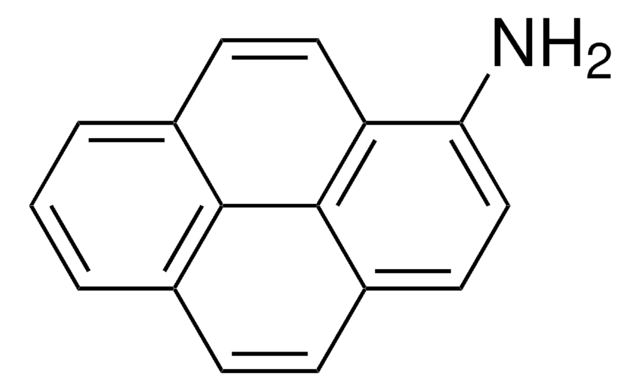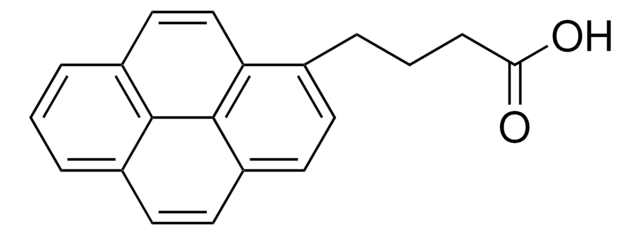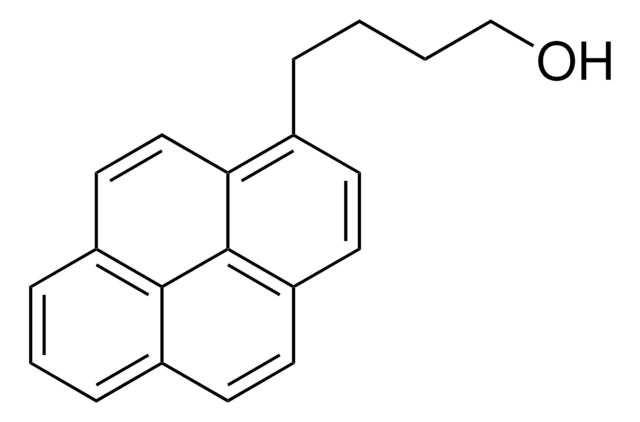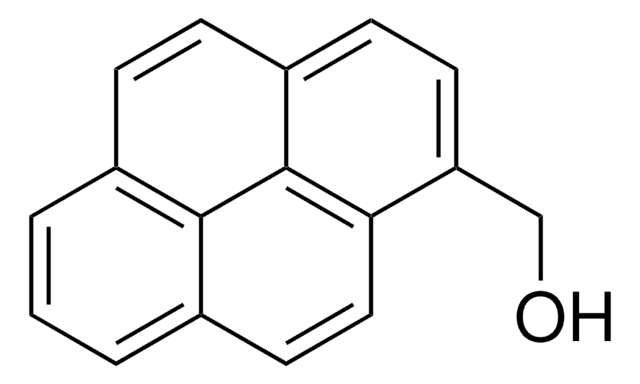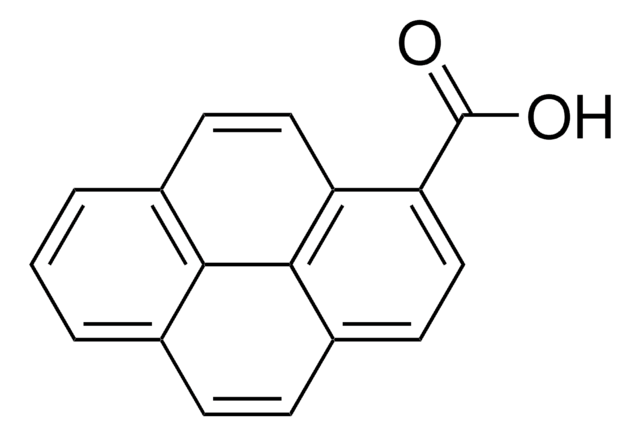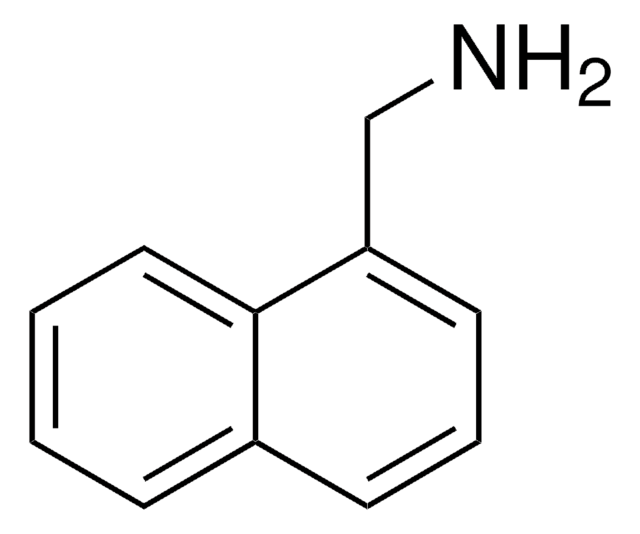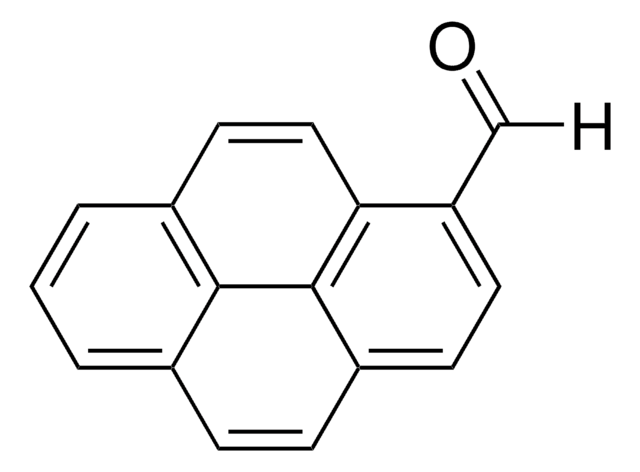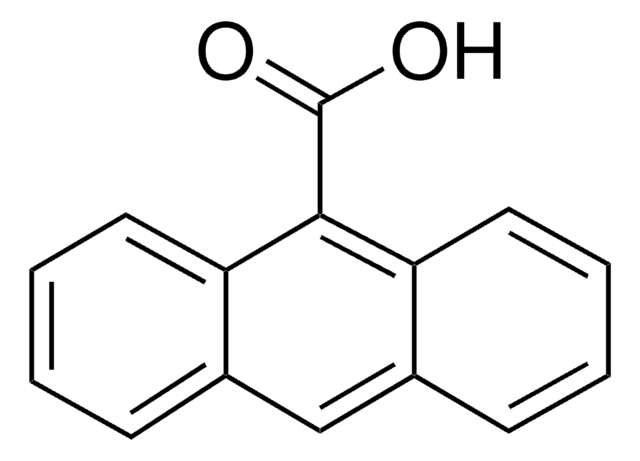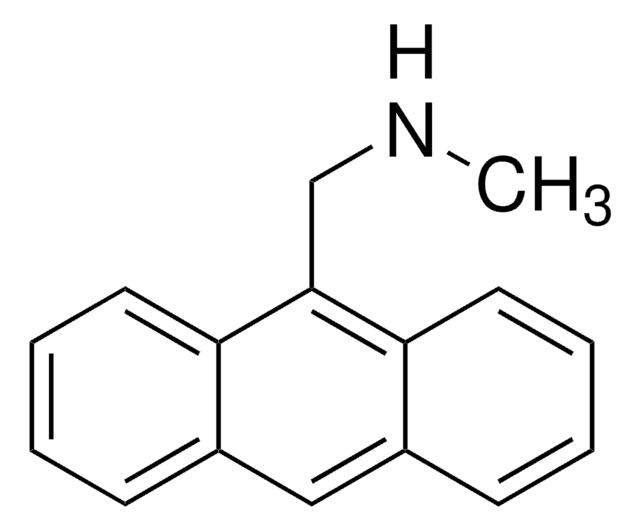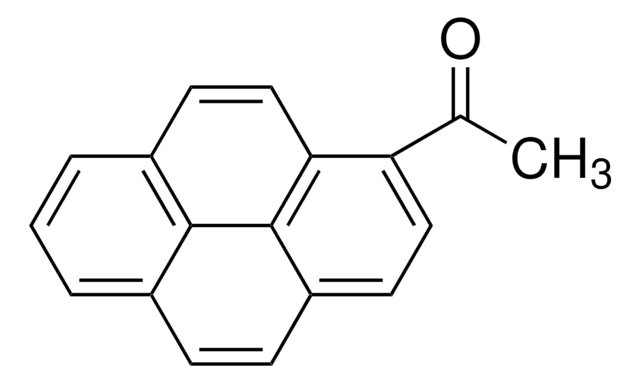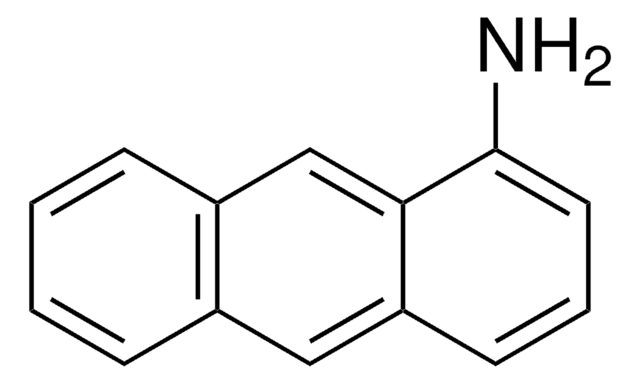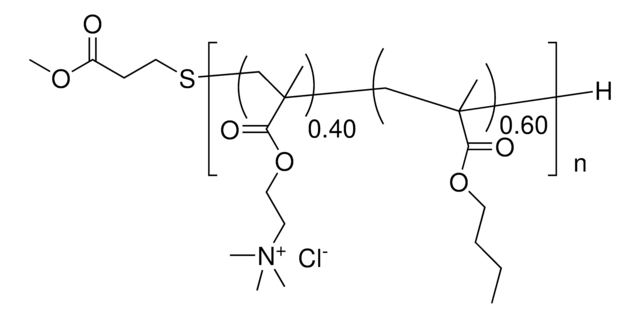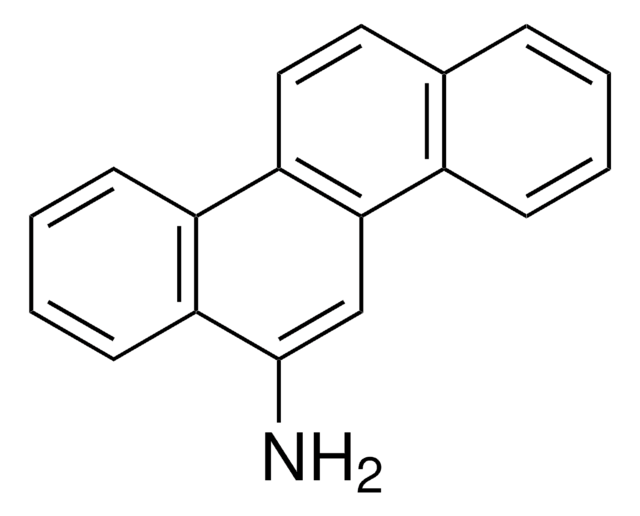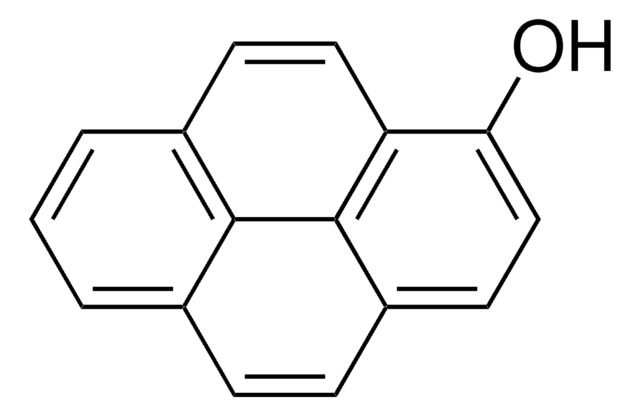401633
1-Pyrenemethylamine hydrochloride
95%
Synonyme(s) :
PMA
Se connecterpour consulter vos tarifs contractuels et ceux de votre entreprise/organisme
About This Item
Formule empirique (notation de Hill):
C17H13N · HCl
Numéro CAS:
Poids moléculaire :
267.75
Numéro MDL:
Code UNSPSC :
12352100
ID de substance PubChem :
Nomenclature NACRES :
NA.22
Produits recommandés
Niveau de qualité
Pureté
95%
Forme
powder
Pf
258 °C (dec.) (lit.)
Groupe fonctionnel
amine
Chaîne SMILES
Cl[H].NCc1ccc2ccc3cccc4ccc1c2c34
InChI
1S/C17H13N.ClH/c18-10-14-7-6-13-5-4-11-2-1-3-12-8-9-15(14)17(13)16(11)12;/h1-9H,10,18H2;1H
Clé InChI
RGNMXKKNDSHTFD-UHFFFAOYSA-N
Catégories apparentées
Description générale
1-Pyrenemethylamine hydrochloride is an organic building block.
Application
1-Pyrenemethylamine (PyNH2) has also been used for the synthesis of:
It can also be used for the synthesis of 4,6-dichloro-2-pyrenemethylamine-1,3,5-triazine, a precursor to synthesize a star shaped polymer 4,6-bis(9H-carbazol-2-yloxy)-2-(pyrenemethylamine)-1,3,5 triazine (TPC).
- Pyrenyl hyaluronan (Py-HA), a pyrenyl-based polymer that can be used for the development of pH-triggered drug carriers.
- An electrochemical electrode of reduced graphene oxide bound with pyrene functionalized folic acid derivative.
It can also be used for the synthesis of 4,6-dichloro-2-pyrenemethylamine-1,3,5-triazine, a precursor to synthesize a star shaped polymer 4,6-bis(9H-carbazol-2-yloxy)-2-(pyrenemethylamine)-1,3,5 triazine (TPC).
1-Pyrenemethylamine hydrochloride (PyNH2) has been used for the loading of human telomerase reverse transcriptase (hTERT) small interfering RNA (siRNA) to the functionalized graphene oxide (GO) for the tumor targeting delivery of siRNA.
1-Pyrenemethylamine hydrochloride has been used in the preparation of 1-pyrenemethylamine. It may be used for the noncovalent functionalization of SWNTs with cationic moieties which binds strongly to the negatively charged phosphate backbone of the DNA. It may be used in the preparation of the following Schiff-base ligand:
- pyren-1-ylmethyl-[2-(6-{2-[(pyren-1-ylmethylimino)-methyl]-phenoxymethyl}-pyridin-2-ylmethoxy)-benzylidene]-amine
- 2(pyren-1-ylmethyl-{2-[6-(2-{[(pyren-1-ylmethyl)-amino]-methyl}- phenoxymethyl)-pyridin-2-ylmethoxy])-benzyl}-amine
Mention d'avertissement
Warning
Mentions de danger
Conseils de prudence
Classification des risques
Eye Irrit. 2 - Skin Irrit. 2 - STOT SE 3
Organes cibles
Respiratory system
Code de la classe de stockage
11 - Combustible Solids
Classe de danger pour l'eau (WGK)
WGK 3
Équipement de protection individuelle
dust mask type N95 (US), Eyeshields, Gloves
Faites votre choix parmi les versions les plus récentes :
Déjà en possession de ce produit ?
Retrouvez la documentation relative aux produits que vous avez récemment achetés dans la Bibliothèque de documents.
Les clients ont également consulté
Fabien Giroud et al.
Biosensors & bioelectronics, 87, 957-963 (2016-09-26)
We report the functionalization of multi-walled carbon nanotubes (MWCNTs) electrodes by a bifunctional nitroaromatic molecule accomplished via π-π interactions of a pyrene derivative. DTNB (5,5'-dithiobis(2-nitrobenzoic acid)) has the particularity to possess both electroactivable nitro groups and negatively charged carboxylic groups.
Sudarat Yenjai et al.
Journal of photochemistry and photobiology. B, Biology, 173, 35-42 (2017-05-30)
A new photochemical reagent, succinic acid-1(1-pyrene)methylamide (PMA-SUC), was developed to recognize the specific binding sites on model proteins, egg-white lysozyme and avidin. The interaction of the photochemical reagent with the proteins was studied by UV-Vis, fluorescence spectroscopic methods and docking
Synthesis and fluorescence properties of carbazole based asymmetric functionalized star shaped polymer.
Guzel M, et al.
Journal of the Electrochemical Society, 164(2), H49-H55 (2017)
Reactively formed block and graft copolymers as compatibilizers for polyamide 66/PS blends.
Jeon HK, et al.
Polymer, 45(1), 197-206 (2004)
Intramolecular excimer formation and sensing behavior of new fluorimetric probes and their interactions with metal cations and barbituric acids.
Lodeiro C, et al.
Sensors and Actuators B, Chemical, 115(1), 276-286 (2006)
Notre équipe de scientifiques dispose d'une expérience dans tous les secteurs de la recherche, notamment en sciences de la vie, science des matériaux, synthèse chimique, chromatographie, analyse et dans de nombreux autres domaines..
Contacter notre Service technique